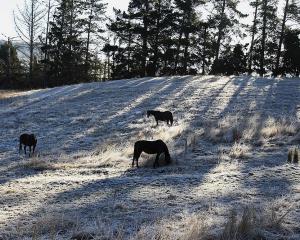If you were wilting in the scorching heat on Saturday, it was probably because it was one of the hottest January days on record.
Niwa figures showed the mercury rose to 34degC at Dunedin International Airport - the second highest January maximum temperature since its records at the airport started in 1991.
The highest January temperature on record was 34.6degC, on January 18, 2004.
Weatherwatch analyst Richard Green said it almost reached the highest temperature on record which was 35.5degC recorded at the airport in 1982.
''I don't have a specific calendar date but it could have been February 6, 1982 as Canterbury had readings of 37degC in both Timaru and Christchurch.''
He said people across the South Island sweltered on Saturday as temperatures soared. Unofficially, the mercury was close to 40degC in some sheltered areas.
Mosgiel and Hanmer Springs recorded 35degC while the main centres of the North Island were close to 30degC, he said.
''It was very hot across so many areas [at the weekend] and it doesn't look like it'll be the last time, with temperatures well into the 30s this summer.
''There are signs that once more, that heat will drift across from Australia again as our neighbours are standing by for some stations to hit 50degC.''
Niwa has forecast the ''wetter in the west and drier in the east'' weather patterns to continue for January to March, 2013.
A Niwa spokesman said the equatorial Pacific Ocean reflected ENSO-neutral conditions (neither El Nino nor La Nina) which indicated the present conditions were ''very likely'' to persist into the southern hemisphere autumn.
In inland Otago, Niwa is predicting late-summer temperatures to be near average, and seasonal rainfall totals are equally likely to be in the near-normal or above-normal ranges.
January-March soil moisture levels and river flows are likely to be in the normal range.
In coastal Otago, January-March temperatures are likely to be near average, while seasonal rainfall, soil moisture levels and river flows are all likely to be in the near-normal range.







